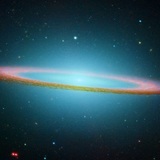INDI Library v2.0.7 is Released (01 Apr 2024)
Bi-monthly release with minor bug fixes and improvements
Just getting started and need a little help
- Ronald Scotti
-
 Topic Author
Topic Author
- Offline
- Elite Member
-

- Posts: 396
- Thank you received: 17
Just getting started and need a little help was created by Ronald Scotti
I am just getting started with Kstars/EKOS. I downloaded the programs yesterday, but I have made good progress with some remaining issues. I am running the INDI Server on a 32 bit windows laptop at the telescope (My gear is: Celestron CGEM mount, several telescopes, SBIG 8300M main camera, SX filter wheel, OAG with an SX Lodestar as my guide camera and the equipment is all working locally). On the server I connect to the mount, the SX CCD and SX Filter wheel using ASCOM drivers (but not the SBIG camera). I am running KSTARTS/EKOS on a 64 bit remote machine in the house connecting over my private wireless network. I have set the address and ports so that the two programs talk to each other. I have a profile, in Ekos, which includes the mount, an SBIG CCD, an SX CCD guider and the SC Filter Wheel. I can connect to these devices in EKOS except for the SBIG CCD. I tried a new profile which only has the SBIG CCD in EKOS and no devices on INDI Server, but I was still unable to establish the remote device: SBIG CCD.
Can someone help point me in the right direction to try and get the SBIG camera working?
thanks,
Ron
Please Log in or Create an account to join the conversation.
- Jasem Mutlaq
-

- Away
- Administrator
-

Replied by Jasem Mutlaq on topic Just getting started and need a little help
Please Log in or Create an account to join the conversation.
- Ronald Scotti
-
 Topic Author
Topic Author
- Offline
- Elite Member
-

- Posts: 396
- Thank you received: 17
Replied by Ronald Scotti on topic Just getting started and need a little help
thanks again,
Ron
Please Log in or Create an account to join the conversation.
- Ronald Scotti
-
 Topic Author
Topic Author
- Offline
- Elite Member
-

- Posts: 396
- Thank you received: 17
Replied by Ronald Scotti on topic Just getting started and need a little help
Searching thru the forum you seem to have a lot of history with this approach (Rpi as local server). What would you recommend for hardware and best instructions for getting the software up and running? I assume I want a powered hub and I need a serial port solution for the Rpi to connect the NexRemote to for the mount. I would connect to my local network with an Ethernet cable to the Rpi (or could be wireless). While I am reasonably familiar with the Rpi and its environment I am now 70 years old and will accept all the hand holding I can get!
thanks,
Ron
Please Log in or Create an account to join the conversation.
- Jasem Mutlaq
-

- Away
- Administrator
-

Replied by Jasem Mutlaq on topic Just getting started and need a little help
If you have reliable network like mine (Gigabit LAN) then I'd recommend the following configuration:
1. RPI3 + Powered USB Hub for INDI Server
2. KStars/Ekos as client on a more powerful machine.
Now KStars for Windows is still work in progress so it might not be at stable as its Linux counterpart but it's getting there. For remote operations, there are practically no difference between KStars on Linux and on Windows. You can follow Ekos on Raspberry PI tutorial but simply skip installing Ekos on Raspberry PI as it is not required nor you need VNC since you'll be remotely controlling it via Ekos.
Please Log in or Create an account to join the conversation.
- Ronald Scotti
-
 Topic Author
Topic Author
- Offline
- Elite Member
-

- Posts: 396
- Thank you received: 17
Replied by Ronald Scotti on topic Just getting started and need a little help
thanks again.
Ron
Please Log in or Create an account to join the conversation.
- Ronald Scotti
-
 Topic Author
Topic Author
- Offline
- Elite Member
-

- Posts: 396
- Thank you received: 17
Replied by Ronald Scotti on topic Just getting started and need a little help
thanks,
Ron
Please Log in or Create an account to join the conversation.
- Ronald Scotti
-
 Topic Author
Topic Author
- Offline
- Elite Member
-

- Posts: 396
- Thank you received: 17
Replied by Ronald Scotti on topic Powering Rpi and Hub
I read this on the INDI LIbrary site;
You should power up your Raspberry Pi from the same USB hub you are connecting your CCD to. Powering Raspberry Pi with its own power supply will result in your CCD and Raspberry Pi do not have common ground (GND). This leads to non-zero voltage potential on all wires between your CCD and Raspberry Pi, including data lines. The noise identified on the images represents the current related to this non-zero voltage potential.
Is this something you do? My SBIG CCD has its own power supply, so that will make it impossible to power both the CCD and Rpi from the USB port. I have not tried this yet so I don't know if I will experience more noise or not. From what I understand you cannot backpower the Rpi3 thru the USB anyway (at least not at boot up). I have also read that the Rpi is only grounded thru the monitor cable, so in headless operation is it just floating.
I guess I will have to wait until I get to try this out to see if there is a problem or not, unless anyone here has any input to add.
thanks,
Ron
Please Log in or Create an account to join the conversation.
- Jasem Mutlaq
-

- Away
- Administrator
-

Replied by Jasem Mutlaq on topic Powering Rpi and Hub
Please Log in or Create an account to join the conversation.
- Ronald Scotti
-
 Topic Author
Topic Author
- Offline
- Elite Member
-

- Posts: 396
- Thank you received: 17
Replied by Ronald Scotti on topic Powering Rpi and Hub
One other question. I want the Rpi INDI server to access the CGEM mount. I purchased a Rpi GPIO Tx/Rx to DB9M RS232 Serial Board to plug into the Rpi. Not sure why I did not buy just a USB to serial adapter instead, but this is what I bought. It is supposed to level shift from RS232 voltages to TTL voltages for the Rpi. Does anyone have experience with this approach, I don't want to fry the pi!
thanks,
Ron
Please Log in or Create an account to join the conversation.
- Radek Kaczorek
-

- Offline
- Moderator
-

- Posts: 983
- Thank you received: 375
Replied by Radek Kaczorek on topic Powering Rpi and Hub
I have authored this. This is related to so called ground loop for cameras powered from RPi over usb. It may result in a pattern on images taken by such cameras (in my case it was Atik Titan). I don't think it applies to cameras with their own power supply. In such cases data lines are well separated from power lines.
Please Log in or Create an account to join the conversation.
- Brian Morgan
-

- Offline
- Premium Member
-

- Posts: 81
- Thank you received: 3
Replied by Brian Morgan on topic Just getting started and need a little help
Out-of-the-box the Pi 3 Model B supports 802.11n having a speed of approximately 150 Mbps, and a 10/100 ethernet port. Neither can keep up with the USB 2,0 speed of 480 Mbps that interfaces to your camera. The ASI120 can deliver a resolution of 1280x960 pixels at 35 fps. That is 344 Mbps at 8 bits per pixel or 430 Mbps at 10 bits per pixel. Those rates push the limits of the USB 2.0 interface.
So this begs the question: If you have a relatively slow network connection, and you choose to stream video for 10 seconds. will the INDI driver use the PI's free RAM to buffer the video? Is the size of that ring buffer configurable?
Thank you.
Please Log in or Create an account to join the conversation.
